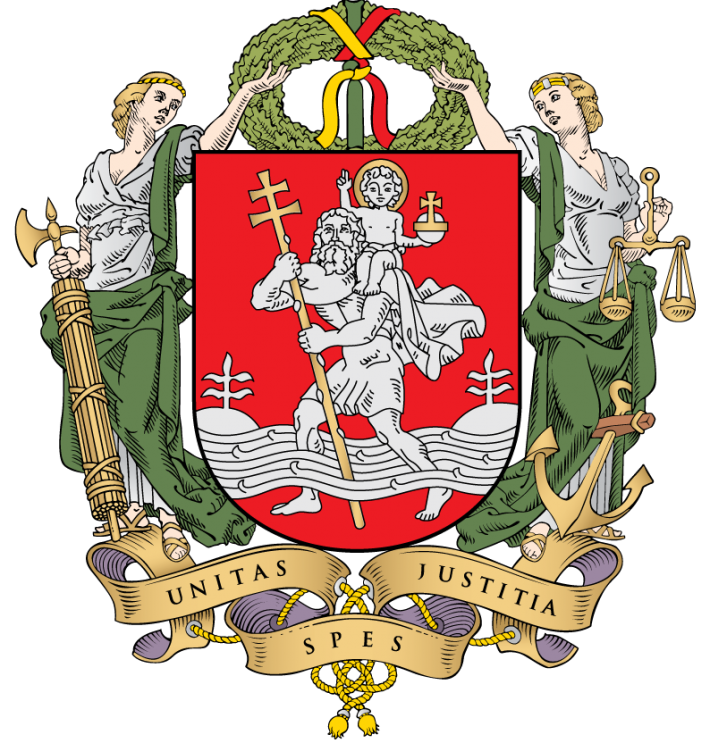Views: 238
 The Galera Gallery in the Užupis Art Incubator also operates there, where exhibitions of various kinds of art are organized
The Galera Gallery in the Užupis Art Incubator also operates there, where exhibitions of various kinds of art are organized
 Galera of Užupis is an Alternative art gallery. That is a place similar to the former Christiana district in Copenhagen in Denmark
Galera of Užupis is an Alternative art gallery. That is a place similar to the former Christiana district in Copenhagen in Denmark
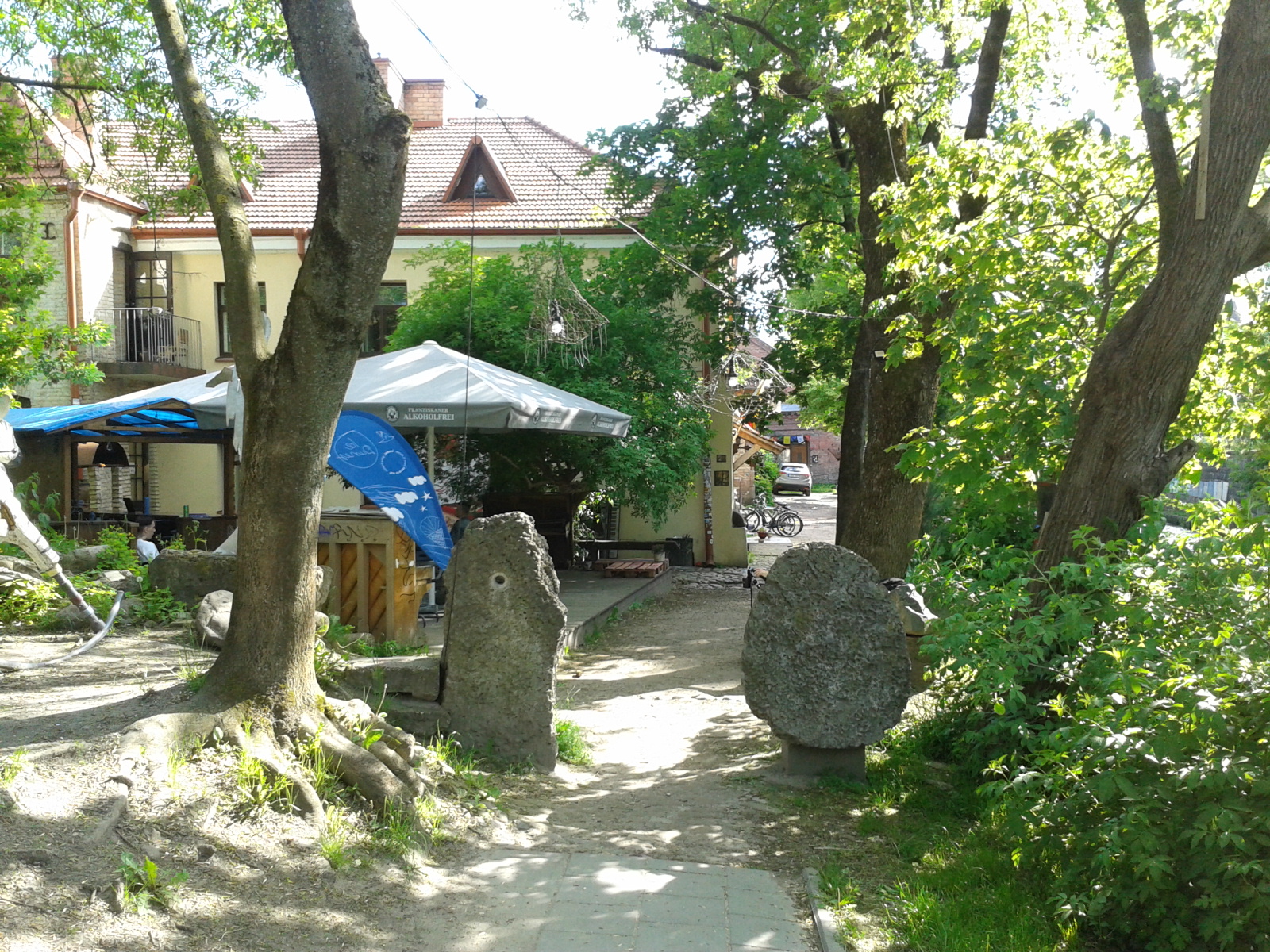 The Užupis district and its Art Incubator are separated from the Old Town in Vilnius on three sides by the River Vilnia, and by a high hill on the fourth side
The Užupis district and its Art Incubator are separated from the Old Town in Vilnius on three sides by the River Vilnia, and by a high hill on the fourth side
All photos are copyrighted by Vladislav B. Sotirovic
© Vladislav B. Sotirovic 2020
RELATED POSTS
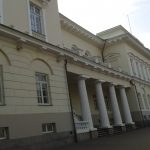
The main façade of the Presidential Palace (Prezidentura) in Vilnius at Simonas Daukantas SquareThe presidential coat-of-arms is adorning the entrance to the President's Chancellery on University StreetThe Inner Courtyard of the Presidential Palace - the palace of the President of the Republic of Lithuania since 1997All photos are copyrighted by Vladislav B. Sotirovic© Vladislav B. Sotirovic 2018
Continue Reading
The Church of the Heart of Jesus is a significant monument of Baroque (finished in 1756). It is the only Roman Catholic church in Lithuania to be built along a Greek Orthodox cross designThe church has a large octagonal cupola (dome) and a very reach the elegant exterior. The interior is no less magnificent, although it was severely damaged during the Soviet timeAfter 1945, a prison was established in the church and convent buildings. The church interior and the plan of the convent buildings were transformed. After 1990, the sacral buildings are returned to their former ownersAll photos are copyrighted by Vladislav B. Sotirovic© Vladislav B. Sotirovic 2020
Continue Reading
The founder of the church was a Grand Hetman and Vilnius Voivode of the Grand Duchy of Lithuania. The 17th-century church's façade is modest, however the interior is richly ornate with a number of stucco mouldings The church was built to mark the liberation of Vilnius from Moscow (The 1655-1661 War) and the founder's own escape from the hands of rebellious soldiers. The interior was created by the Italians G. P. Perti and G. M. Galli, who decorated it with more than 2,000 stucco mouldings The chandelier was created in 1905 in Riga and represents the Biblical Noah's arkAll photos are copyrighted by Vladislav B. Sotirovic© Vladislav B. Sotirovic 2018
Continue Reading
At the egde of Vingio Park, stands a Classical chapel built by Governor Nikolai Repnin for his wife in 1799-1800Behind the chapel, one can find the restored graves of the German, Russian, Polish, Turkish and Austro-Hungarian soldiers killed in both world wars A monument to the soldiers of the Central Powers killed in WWI in Vingio ParkAll photos are copyrighted by Vladislav B. Sotirovic© Vladislav B. Sotirovic 2020
Continue Reading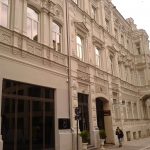
The building in Vilnius Street in Vilnius No. 25 in which Jonas Basanavičius died in hospital on February 16th, 1927. The day of his death coincided with the anniversary of the Independence Act in 1918A memorial plaque on the building informs that in this building in 1909 the Editorial Board of the oldest Lithuanian newspaper "Lithuanian News" started to work Another memorial plague on the building as this building housed a music school, where the famous violinist Jascha Heifetz studied in 1905-1909 All photos are copyrighted by Vladislav B. Sotirovic© Vladislav B. Sotirovic 2022
Continue Reading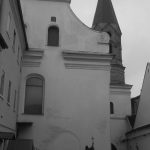
This is the first Evangelical Lutheran Church (Kirche) built-in Vilnius in 1555 on the initiative of the Chancellor of the Grand Duchy of Lithuania Nicholas Radziwiłł the Black. In front of the church, there is a monument erected to Martin Luther The church was rebuilt in 1662 and substantially reconstructed in 1738-1744. In 1944 it was closed down. In 1993 it was returned to the parishioners and renovatedThe church has a single nave and an original pentagonal shape. Its magnificent high altar was designed by German Protestant architect Jan (Johan) Krzysztof GlaubitzAll photos are copyrighted by Vladislav B. Sotirovic© Vladislav B. Sotirovic 2019
Continue Reading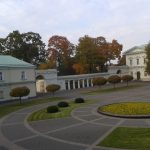
The palace has always been representional: rulers, kings, emperors and kings-to-be like Napoleon, Stanislaus August Poniatowski, Alexander I, Louis XVIII and others used to stay there on their visits to VilniusThe Soviets turned the palace into an officer's club later to be converted into Artist HouseIn 1939, when Vilnius had been part of Lithuania, plans to settle the Presidency in the palace were advanced. However, it was not until 1997 that these plans were carried outAll photos are copyrighted by Vladislav B. Sotirovic© Vladislav B. Sotirovic 2020
Continue Reading
The church received its current form in 1738-1749 after fires in the cityThe church was rebuilted by Vilnius Baroque architect J. K. Glaubitz in the ornate Late Baroque style, and installed 24 altars insite The church bell tower received its current shape in 1737. The bell tower is 68 m tall. It is the tallest building in Vilnius Old TownAll photos are copyrighted by Vladislav B. Sotirovic© Vladislav B. Sotirovic 2018
Continue Reading
Cathedral Basilica of St. Stanislaus and St. Vladislaus in Vilnius. Today the Cathedral Basilica is in the Classicist style as it was redisigned in 1783-1801 by Lithuanian architect Laurynas Gucevičius Baroque-style Cathedral's St. Casimir's Chapel built in 1610-1632 for holding the remains of St. Casimir (declared in 1604 by Pope Clemens VIII as the saint Cathedral Basilica Bell Tower. It is rebuilt tower that was part of the defensive wall that encircled the Lower CastleSaveAll photos are copyrighted by Vladislav B. Sotirovic© Vladislav B. Sotirovic 2018
Continue Reading
Monument to the Gaon of Vilnius Elijah ben Solomon Zalman (1720-1797) called "Jewish Saga". The monument is located on the place where he lived. The house was destroyed during WWII and it was not restored. Nearby the monument there is a memorial plaque in Lithuanian and Hebrew on a building at Žydų (Jewish) Street Antokolski Street in Vilnius Old Town's Jewish Quarter. In this street the famous 19th century sculptor Mark Antokolski lived in 1843-1862. It was here he created his first sculptors depicting the inhabitants of his native quarter, which later gained recognitionMėsinių Street in Vilnius Old Town. That was one of the longest and most important street in the Jewish QuarterAll photos are copyrighted by Vladislav B. Sotirovic© Vladislav B. Sotirovic 2019
Continue Reading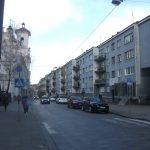
The Górecki estate in Dominikonų St. 15 is a two-storey Gothic house. It was built on this site in the late 15th or early 16th century. In 1649 it was bought by Vilnius UniversityZawisha estate is known since late 16th or early 17th century. It was renovated in the late 18th century. The façade is strictly symmetrical, done in the style of early Classicism. Renaissance vaults have survivedDominikonų Street is dominated by the Roman Catholic Church of the Holy Spirit and the Dominican Monastery (1501)All photos are copyrighted by Vladislav B. Sotirovic© Vladislav B. Sotirovic 2020
Continue Reading
Trakų St. finishes where it meets Pylimo St, which runs along the course of the old city wall. There used to be a gate here, which was pulled down together with the wall at the very beginning of the 19th century. In the niche of the Umiastowski estate (Trakų St. 2) there is a Statue of "The City Guard" (1973) In Trakų Street, there is the Church of Our Lady of the Assumption that was founded here by the noble Goštautas family in 1387, the same year as Lithuania became converted to Christianity. However, it is believed that the church with the monastery existed even earlierOne of courtyards of the buildings in Trakų StreetAll photos are copyrighted by Vladislav B. Sotirovic© Vladislav B. Sotirovic 2020
Continue Reading
Christmas Tree decoration at the Cathedral Basilica Square in Vilnius. The belfry is seen in the backgroundChristmas decoration in front of the principal building of the castle complex in Vilnius Old Town - Cathedral BasilicaCathedral Basilica of Vilnius is erected on the place of the pagan altar with a ceasred fire to the pagan god Perkūnas (god of Thunder)All photos are copyrighted by Vladislav B. Sotirovic© Vladislav B. Sotirovic 2019
Continue Reading
The organ, made by famous German master Adam G. Casparini in 1776, is one of the most valuable cultural monuments of Lithuania. The organ itself is the only surviving original 18th-century instrument in LithuaniaThe church has many Baroque frescoes. In the cupola, there is a multi-figural composition "Apotheosis of the Holy Spirit" (neo-Baroque, 19th century)The altars and the pulpit are lavishly decorated with round and relief sculptures and ornamentation All photos are copyrighted by Vladislav B. Sotirovic© Vladislav B. Sotirovic 2018
Continue Reading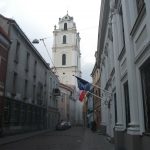
In this street, it was used to be a market place where it meets Pilies street. The first Town Hall is also believed to have stood on this spot Pharmacy house in St. John St. No. 5. Georg Schulz's pharmacy operated in this house since 1639. During the war in 1655, the house was burned down. In 1781, pharmacist Koszyk acquired the ruined building and reconstructed it The Pac estate. Since 1628, the building belonged to the Pac magnate family of the Grand Duchy of Lithuania. In 1783, the dilapidated building was bought, renovated and decorated by the Chancellor of the Grand Duchy of Lithuania - Alexander Michael Sapieha. Currently, the building belongs to the Polish Embassy All photos are copyrighted by Vladislav B. Sotirovic© Vladislav B. Sotirovic 2020
Continue Reading
In 1986 the east winf of the Old Arsenal was restored. It houses the Museum of Applied Art and Design. The Old Arsenal enables the visitors to feel the ambience of the Renaissance Vilnius The building of the Old Arsenal was remodelled by Sigismund Augustus (second half of the 16th century) in the Renaissance style, mainly by adding a third floor (the attic), decorated in double arch niches. In was an enormous building, reputed to be the largest in the Polish-Lithuanian Commonwealth The Old Arsenal was badly damaged during the war with Russia in 1655-1661, and remained a virtual ruin until the late 18th century when in 1780 was rebuilt and burned down at the end of WWIIAll photos are copyrighted by Vladislav B. Sotirovic© Vladislav B. Sotirovic 2020
Continue Reading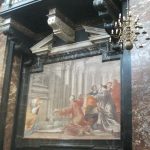
The silver cofin of St. Casimir is under a plaster canopy accompanied by relics. Under the cofin is a miraculous painting in a silver frame, with a silver statue with the saint's attributes placed on the cofin. The relief features a very rare depiction of a smiling Blessed Virgin Mary with Baby JesusIn the chapel there are eight silver-plated wooden Baroque statues of the Kings and Grand Dukes of Poland and Lithuania from the Gediminid and Jagiellon dynasties from the 17th centuryThree-Handed Image of St. Casimir c. 1520. This painting is considered to be miraculous. In 1743 the painting was put into a silver, gold-plated framing. St. Casimir is holding lilies and a rosary, which are his symbolsAll photos are copyrighted by Vladislav B. Sotirovic© Vladislav B. Sotirovic 2020
Continue Reading
A geographical centre of Europe - 25 km far from Vilnius. From 2015 Summer You will get a special Certificate that you have visited the Geographical center of Europe. Don't miss the chance to get it for freeThe Baltic States of Europe - Estonia, Latvia & LithuaniaVytis (The Knight) - The Coat of Arm of both historical Grand Duchy of Lithuania and present-day the Republic of LithuaniaOrigins of images: Facebook, Twitter, Wikimedia, Wikipedia, Flickr, Google, Imageinjection & Pinterest.Read our Disclaimer/Legal Statement!Donate to Support UsWe would like to ask you to consider a small donation to help our team keep working.
Continue Reading
Its foundations are superimposed on the remains of a square tower, one of the oldest brick buildings in Lithuania, whose bricks are bound in the pre-Cothis (Baltic) manner An oval four-story tower with loopholes was built on these remains. Originally, it was a defensive tower of the Lower CastleThe underground square part dates from the 13th century, and the round part - from the late 14th century All photos are copyrighted by Vladislav B. Sotirovic© Vladislav B. Sotirovic 2019
Continue Reading
One of the focal touristic attractions in the Žvėrynas district of Vilnius is the traditional type of the wooden houses coloured in different coloursŽvėrynas means "menagerie" or "beastland". In the 19th century a forest grew in this areaSince 1893, the process of urbanization of the district of Žvėrynas started with the building of wooden and brick villas and summerhouses. Today, this district of Vilnius is a prestigiuos residential part of the capitalAll photos are copyrighted by Vladislav B. Sotirovic© Vladislav B. Sotirovic 2020
Continue ReadingPresidential Palace
Church of the Heart of Jesus and the Convent of the Visitationists in Vilnius
Church of St. Peter and St. Paul in Vilnius
Vingio Park in Vilnius
The Building in Vilnius Street No. 25
Evangelical Lutheran Church
The Inner Courtyard of the Presidential Palace in Vilnius
St. Johns’ Church
Cathedral Basilica of St. Stanislaus and St. Vladislaus
Jewish Quarter (II)
Dominikonų Street in Vilnius
Trakų Street in Vilnius
Vilnius Christmas Tree
Dominican Church of the Holy Spirit (Interior)
St. John Steet in Vilnius
The Old Arsenal in Vilnius
Chapel of St. Casimir (interior)
Lithuania – Geographical Center of Europe
The Belfry of the Cathedral Basilica in Vilnius
Traditional Wooden Houses in Žvėrynas



